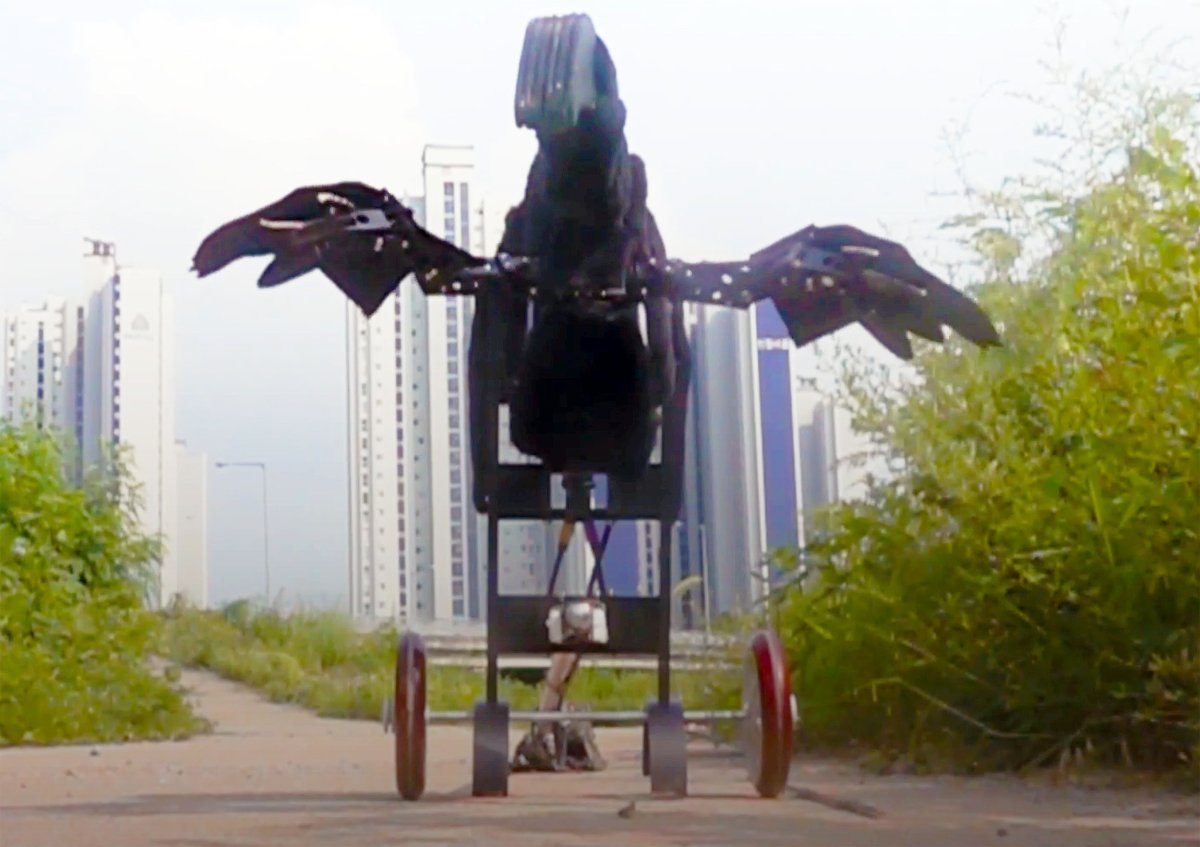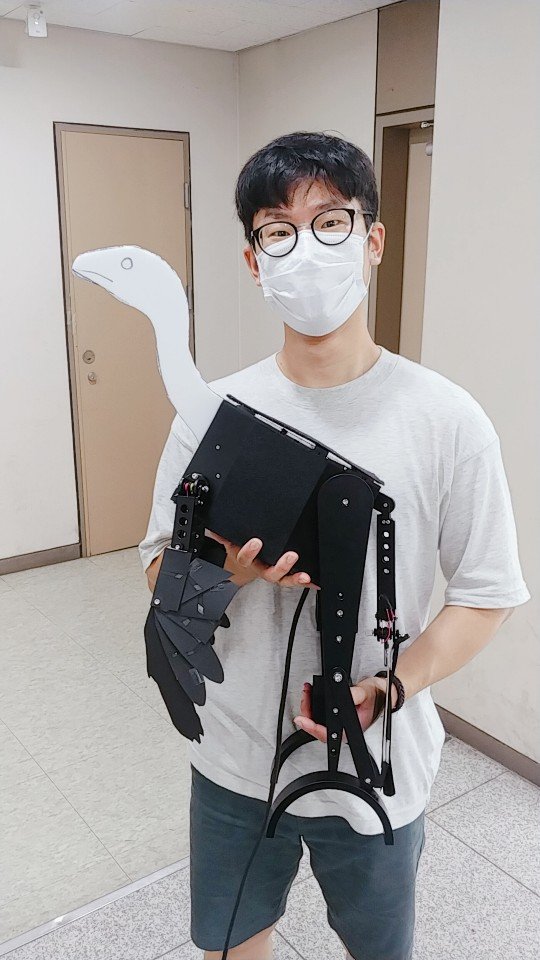Beware the Robo Dino!

Our students’ commitment to excellence often drives them to get involved in unique research projects with important implications for various fields of study related to the earth sciences and beyond. Ph.D. student Minyoung Son is no exception. His research recently saw him involved in an interdisciplinary project aiming to explore how dinosaurs (and birds) got their wings through the creation of a robotic dinosaur, affectionately named Robopteryx.
The lead researcher on this project was a professor who studies bird ecology. For over 20 years, Dr. Piotr Jablonski has been studying a hunting behavior in birds called a “flush display”, where birds abruptly spread their wings or tails in hopes of startling prey insects out of their hiding places. Dr. Jablonski was hoping to expand this line of inquiry to dinosaurs, as they are the progenitors of birds. “This behavior is a newly proposed behavior for dinosaurs. It has been extensively studied in modern birds,” Minyoung explained.
Jablonksi contacted Minyoung’s thesis advisor, Dr. Yuong-Nam Lee, a paleontologist at Seoul National University (SNU), about collaborating. “I just got lucky. I was at the right place at the right time,” says Minyoung. Jablonski was interested in exploring whether the stubby proto wings of flightless dinosaurs could be used for flush displays, and whether that specific behavior may have facilitated the eventual development of full-fledged wings. “It’s very hard to quantify and test how effective these behaviors are,” says Minyoung, “what is important about this project is that it provided a method that could be used to quantify the effects of this kind of display behavior,” a novel approach to such research.
The project got its start when Minyoung had just entered his Master’s program at SNU. For the first year of the Robopteryx project, Minyoung focused on providing measurements and tailoring research questions that would be used to design and construct a robot based on the dinosaur Caudipteryx specimen. He explains, “the model dinosaur we used for the robot is the best fossil evidence we have for the ancestral condition of ‘broad’-feathered (pennaceous feathered) dinosaurs.” As part of the project Minyoung planned to travel to China to look at original fossil specimens of Caudipteryx, but then covid hit. The money that would have been used for travel was put towards building better versions of the robotic dinosaur model.

“The hypothesis is that this “flushing” behavior seen in modern birds, when scaled to dinosaur sizes, still works to flush prey. To elaborate, we were trying to test whether having primitive ‘broad’-feathered wings could improve efficiency and effectiveness of catching prey.” To test this, the team used the robot Robopteryx to scare a modern grasshopper species (Oedaleus infernalis). They then monitored the startle response in the grasshoppers to various flush displays. Minyoung explains further, “by using the simple neural circuit systems of grasshoppers we are able to test how having a bigger ‘wing’ is more efficient in display by measuring the behavioral response in grasshoppers.”
As they expected, the team found that the grasshoppers were most likely to panic when confronted by the Caudipteryx with proto-wings. Minyoung explains the importance of these results, “I’m very happy with the final product. It’s providing new perspectives on how to test these types of hypotheses about how certain behaviors could be relevant to some dinosaurs…The prey item doesn’t have to be grasshoppers. It doesn’t have to be Caudipteryx. The mechanism and behavior should still hold true [with other dinos and arthropods].”
This research was published in Scientific Reports and garnered quite a bit of press. “It’s been great fun! I wasn’t really expecting this. I think it’s the combination of dinosaurs and robots. At the end of the day that made this work interesting,” Minyoung explains. “[The project] was very interesting to me. People in other disciplines, though still in science and engineering, were thinking very differently and from very different approaches about this. They were asking different questions and that was really interesting, and a big learning opportunity for me. I greatly enjoyed it,” he comments.
So what does the future hold for team Robopteryx? “I am on a follow-up project using animations instead of physical robots. So digital robots. Part of the results are in the current publication. But there are more detailed and more complex behaviors to test. So that one’s coming up,” shares Minyoung. And if you’re wondering if Minyoung ever got the opportunity to see the Caudipteryx specimen in person, he did! He was able to visit China for work related to his Ph.D. thesis, where he traveled to the same museum that the original specimen was located at. He made sure to get a quick picture!

Check out the New York Times article on the project
Watch the Robopteryx hunt its prey!